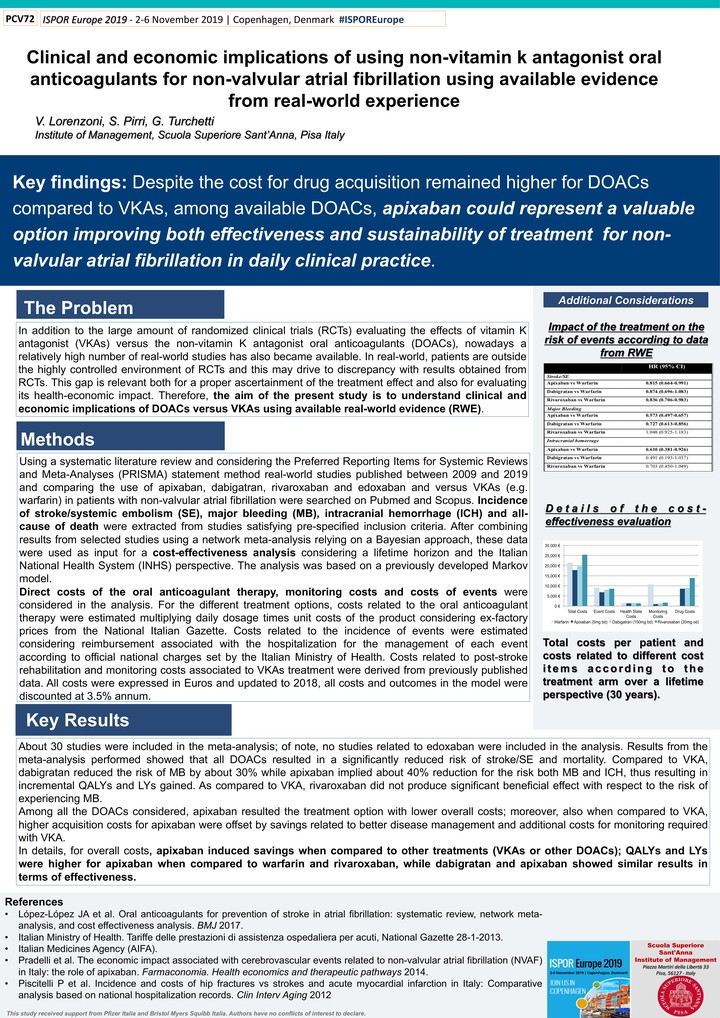Clinical and economic implications of using non-vitamin k antagonist oral anticoagulants for non-valvular atrial fibrillation using available evidence from real-world experience
 Image credit: Unsplash
Image credit: Unsplash
Abstract
OBJECTIVES: To understand clinical and economic implication of non-vitamin K antagonist oral anticoagulants (NOACs) versus vitamin K antagonist (VKAs) using available real-world evidence (RWE). METHODS A literature review was conducted on available RWE comparing the use of rivaroxaban, dabigatran, edoxaban and apixaban (NOACs) versus VKAs (e.g. warfarin) in patients with non-valvular atrial fibrillation. Evidence from literature was used to evaluate the effect of NOACs and VKAs on the incidence of stroke/systemic embolism and bleeding. Direct costs were estimated according to the Italian National Health System (INHS) perspective and drug costs were valued on the basis of ex-factory price from the Italian Official Gazette, not including price discount nor any other negotiation agreement, while costs for drug monitoring and management of events were obtained from both literature and national DRG tariffs. RESULTS: Direct costs related to drug were homogeneous among NOACs and doubled the costs for VKAs. However, NOACs significantly reduced the risk of events as compared to VKAs, with the potential to fill the costs’ gap or even induce savings. Apixaban and dabigatran decreased the risk of stroke/systemic embolism from 10% to 20% and the risk of major bleeding from 10% to more than 40%. Moreover, apixaban had about 40% to 60% probability of being the best alternative in containing stroke/systemic embolism and major bleeding. CONCLUSIONS: Despite the cost for drug acquisition remained higher for NOACs as compared to VKAs, the beneficial effect NOACs showed in RWE on containing events had the potential to offset drug-related costs, thus, improving the sustainability of treatment for non-valvular atrial fibrillation in daily clinical practice.